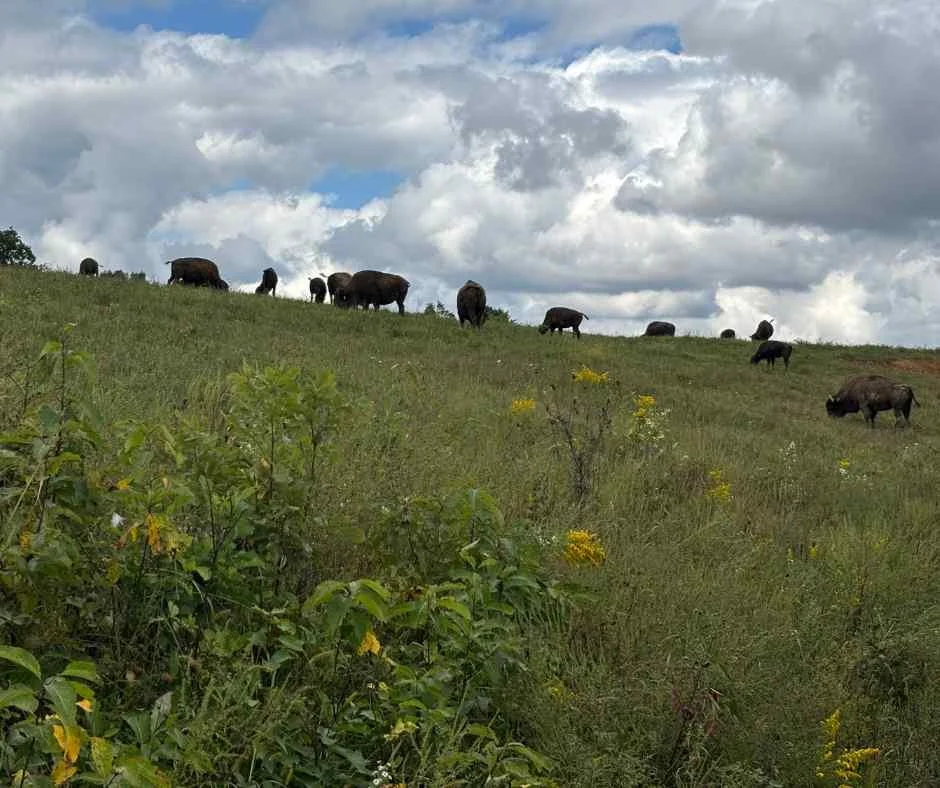Ecosystem Engineers: The Vital Role of Bison in Nature
by Abbi Levin
Bison are more than just iconic symbols of the American West; they are vital architects of our grassland ecosystems! These outstanding animals play a key role in shaping their habitats through grazing, fertilizing, and wallowing, making them a keystone species essential for restoring the health and diversity of our landscapes. Not only do bison enhance ecological balance, but their meat is also gaining popularity as a nutritious protein source, known for its rich flavor and lean composition. So, let’s take a closer look at the countless ecosystem services that bison provide.
Grazing: It is widely accepted within scientific circles that grasslands grazed by bison can promote greater biodiversity in both plant and animal communities. The pattern of grazing in bison herds is less uniform than that of cattle and other livestock species, and this creates a landscape containing both long and short lengths of grass. This pattern results in a varied array of animal species, as those that prefer habitats with long and short grass can coexist in the area. While this species creates more varied heights of grass, it also grazes in a more consistent, uniform manner, often preferring areas of native grasses or places that have recently burned in natural prairie fires. Bison are an incredible species, as they are one of the few livestock species that retain many of their undomesticated instincts.
Fertilization: Bison are masters at both fertilizing the soil and providing a food source for animal life through their patties. Bison are known to walk extreme distances in a day, providing ample opportunities to distribute patties, as well as the seeds contained within their dung, and their hair coats. This movement promotes biodiversity across a landscape and increases the resilience of an area to the natural challenges that nature can present, like drought or excessive rainfall. Dung is also a food source for many beneficial species, including dung beetles.
Wallowing: This unique behavior, where bison roll, often in the same spot multiple times, in soil, enables bison to achieve various goals, such as shedding excess hair, regulating body temperature, scratching, and repelling bothersome insects. Fortunately, for our grasslands, this behavior has several positive impacts on the surrounding ecosystem. One such impact is the ability for a wallow to transform into a pool during rainfall, providing habitat opportunity or a space for another grazing animal to stop for a drink. Wallows also allow for new plant species to take root by exposing bare soil and providing areas for the establishment of new plant species, promoting diversity across grassland ecosystems.
Bison bring a wealth of benefits to our grazing lands! Their natural grazing instincts, soil fertilization, and wallowing behaviors have a positive influence on our ecosystems while providing a valuable protein source. This is just a quick look at the many advantages these remarkable animals offer. As a keystone species, bison are essential for the health and future of our nation’s grasslands—let’s support their role in sustaining this vital environment!
For additional resources on this exceptional grazer, head to the National Bison Association website: nationalbison.org/history-mission

